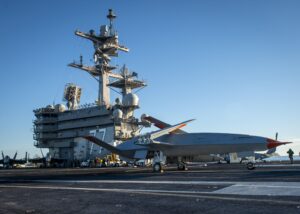
Production challenges have pushed the initial operational capability (IOC) of the Navy’s MQ-25A Stingray unmanned carrier-based tanker back a year to 2026, a program executive said last week. Speaking during the Navy League’s Sea Air Space symposium on April 3, Rear Adm. Stephen Tedford, Program Executive Officer for Unmanned Aviation and Strike Weapons, said the current scheduled plan for MQ-25 IOC is 2026. Previously, the Navy planned to reach IOC in 2025 and then deploy the first operational aircraft aboard…

 By
By 











